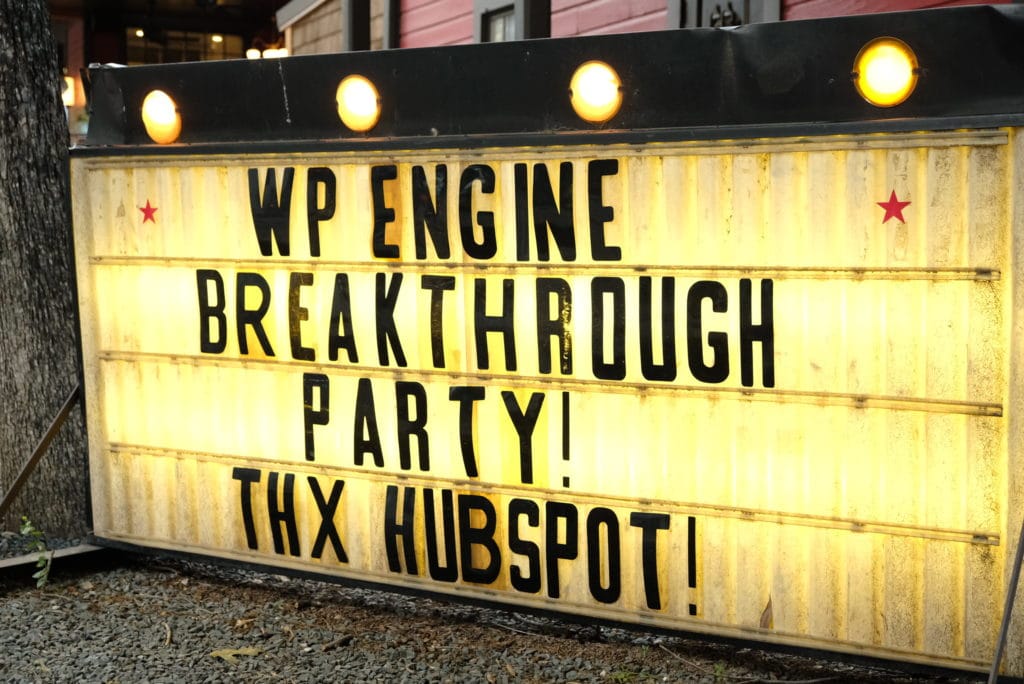Much of marketing depends on passive consumption. You hope the people who read your blog post or watch your video are engaging with it. But with so much content out there, it can start to feel more like background noise.
That’s why many big brands are turning to experiential marketing. The harder it gets to create content that feels truly memorable and unique, the more it pays to aim for something entirely different by creating an immersive, interactive experience.
What is Experiential Marketing?
Experiential marketing goes a step beyond creating a piece of content and aims to build a full, immersive experience. Often it involves real-time, in-person interactions, but it’s not exclusively that. Experiential marketing describes any kind of branded experience that encourages active engagement and, ideally, leaves participants with something to remember and talk up to their friends.
Why Experiential Marketing Pays Off
Social media means your average internet user is awash in content and ads every day. In one minute alone, people post 277,777 stories in Instagram, watch 4.5 million YouTube videos, and send 511,200 tweets. For brands, that means standing out and making a real impact is harder than it’s ever been.
Experiential marketing is an opportunity to get consumer attention in a way that stays on their mind afterwards and produces positive associations with your brand. Eighty-five percent of people say they’re likely to make a purchase after participating in a branded event or experience. And over 90% say they have more positive feelings about a brand after encountering their experiential marketing.
5 Types of Experiential Marketing to Consider
If you’re still a little fuzzy on what experiential marketing entails, seeing some examples should help clarify things. Here are a few of the main types of experiential marketing to try.
1. Live events

Live events are the most common form experiential marketing takes (and this category has some overlap with a few others on our list). This can include hosting a branded industry conference for your peers or customers, an increasingly common tactic that brands like HubSpot and WPEngine, have seen success with.
It can take the form of setting up networking events in your city, or hosting dinners and parties for attendees of a larger event like a conference; SXSW is a particularly popular venue for branded experiences, for instance. Live events require an investment, and you want to make sure your attendees understand the connection between your brand and the event. But if done well, they can leave their mark and provide the people who show up with a positive experience they associate with your company.
2. Classes
Any brand doing content marketing knows the value of providing educational materials to your target audience. Classes take that idea a few steps further by providing more extensive educational content and making it interactive. And in some cases, branded classes offer a certification at the end, which provides students with a tangible career benefit.
Both B2B and B2C brands have seen results with this experiential marketing tactic. Apple hosts in-person classes at Apple stores to teach customers how to get more out of their products. The subjects span from creative skills like photography to more professionally useful ones like coding. And HootSuite has built the HootSuite Academy, which offers online courses for people wanting to shore up their social media skills.
3. Pop-up shops
In the past few years, pop-up shops have become a fashionable trend. They’re useful for businesses that want to garner attention with an inventive concept, or for online businesses curious to test out an in-person version of their stores. Either way, as long as you find a way to make a pop-up shop memorable, it can be a valuable form of experiential marketing.
BarkShop made sure their pop-up shop got coverage and inspired delight in customers by letting the pets do the shopping. They set up dogs with tech to track which items in the shop they showed an interest in. Owners could watch their dogs peruse the shop, and then purchase whichever items the animals sought out.
4. Exhibitions and Installations
Building something that resembles the experience a person gets at a museum or art installation is a great way to attract attention and capture their imagination. Some of the most memorable marketing campaigns are those that deftly combine art and promotion.
Refinery29 has proven this time and again with their 29 Rooms exhibitions. Since 2015, they’ve built out an annual interactive experience that lets visitors wander through 29 rooms—each with a unique theme that encourages them to think, create, and just generally experience something special. The event inevitably gains a lot of attention, and encourages a lot of social shares from attendees who walk out wanting to talk about their experience and share it with friends.
5. Games
People don’t generally hear the word “marketing” and think “fun.” But you can create marketing that actually is fun for your target audience by developing a branded game. Games are a great way to get people more engaged with your brand—especially if the people in your target audience are prone to a competitive spirit. An engaging game inspires people to devote significant time and energy to interacting with your brand—entirely by choice, enjoying themselves at every turn.
Delta successfully used a game as experiential marketing with their Red Coat Challenge. The company hid red coats (the color worn by their employees) all over New York City and released hints to where residents could find them. Winners won a free flight. A good prize combined with a fun concept meant people got really into the game. The company had over 180,000 direct interactions with customers because of it.
Deliver Memorable Experiences
Experiential marketing can be costly, and it’s important that any experiential tactics you try fit effectively into your overall strategy. A cool idea that doesn’t forward your brand mission won’t serve as much more than an interesting gimmick. But if you can come up with a smart idea for an experience that will help you reach the right audience and further your relationship with them, it can be a valuable way to stand out and create something your audience will remember.





Cindy Dashnaw on
I love love love the BarkShop idea! Thanks for sharing, Kristen.
Marcus Nile on
It is refreshing when companies aim at building a relationship with clients. Thanks for throwing light on the important types of experiential marketing for business. A really interesting read!